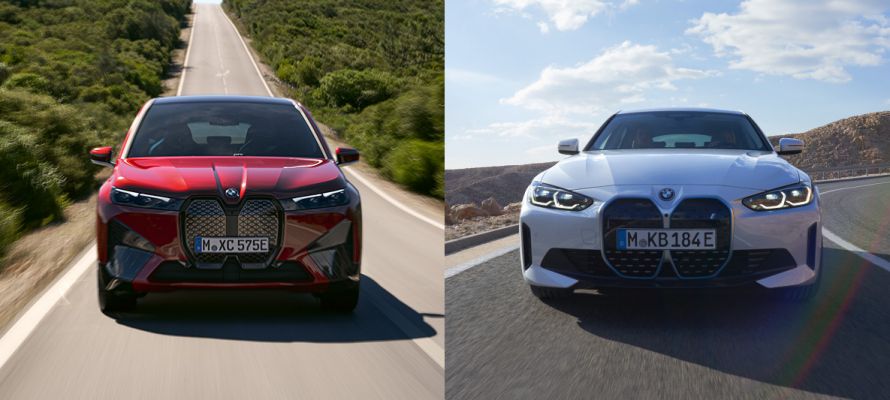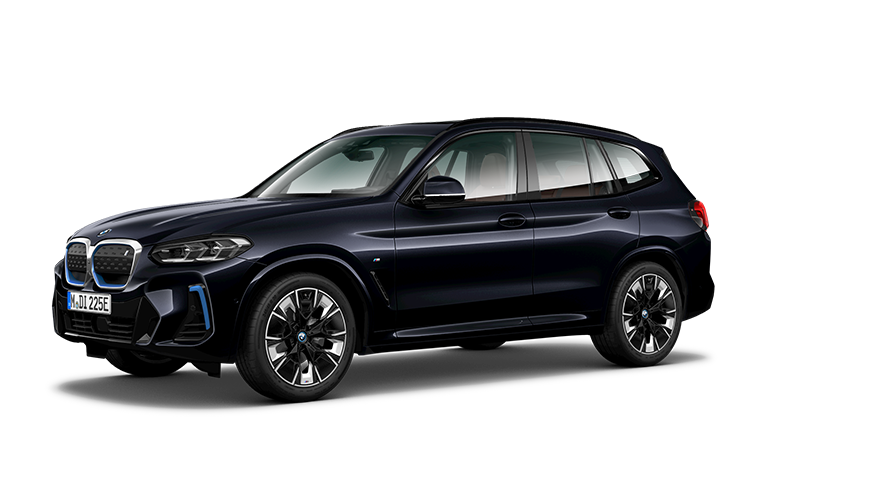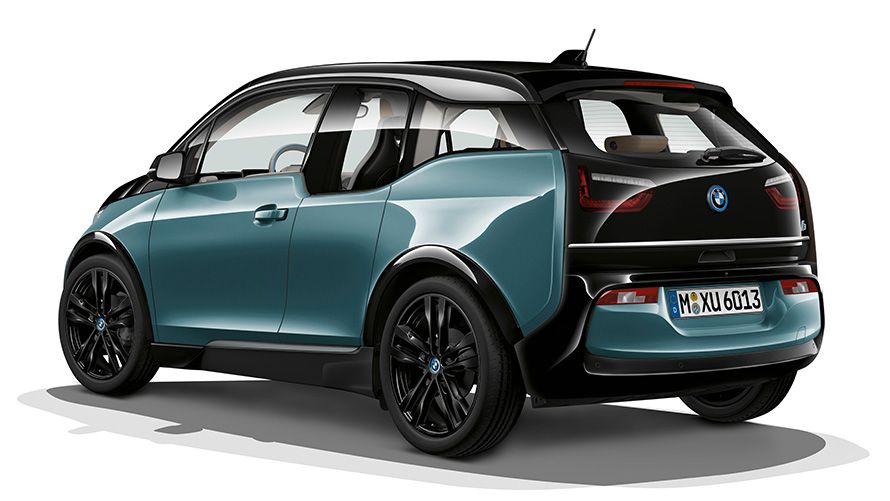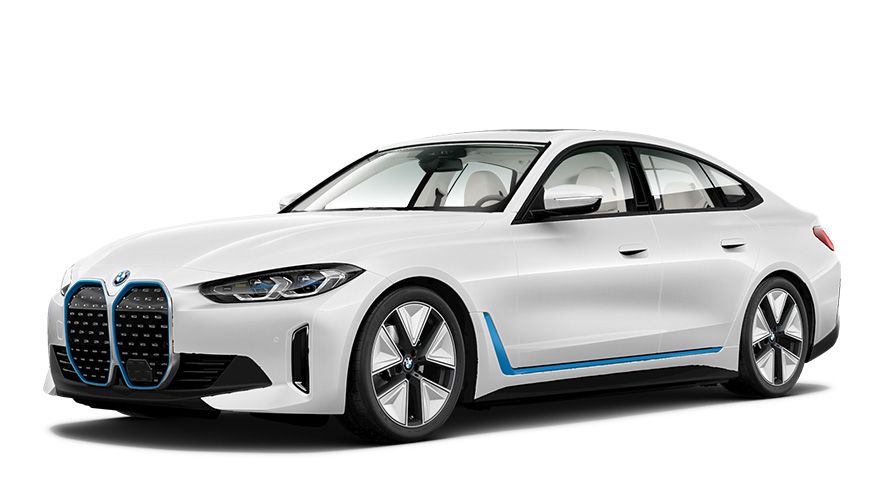The BMW Electric Cars.
100% electric. 100% driving pleasure. 100% BMW.
Did you know that back at the Summer Olympic Games of 1972 held in Munich an all-electric BMW 1602e drove ahead of the athletes in the endurance events in order to film them and supply them with water as necessary? Emission-free and silent, it was the ideal companion at the time and did not obstruct the competitors in achieving their top performances. Today, almost five decades later, we have perfected this capability as well as our know-how in the field of electrified mobility through continuous development of the BMW eDrive technology and the BMW i sub-brand. With our all-electric models BMW iX, BMW iX3, BMW i3 und BMW i3s, you experience an entirely new sensation of sheer driving pleasure. After all, nothing compares with the feeling of gliding almost silently through urban or rural traffic, the instant response of the electric engine and unique acceleration from stand-still. And all of this is free of exhaust fumes and local emissions. Join us to explore the world of BMW electric cars.

THE ULTIMATE ELECTRIC DRIVING MACHINE.
The first of their kind, the new all-electric BMW i4 and BMW iX offer a new level of quality for electrifying driving pleasure. With long ranges and networked charging solutions from BMW Charging, the new BMW i4 and BMW iX set new standards of daily driving practicality and long-distance comfort.
OUR ELECTRIC CARS: BORN ELECTRIC.

BMW iX.
Originating from a vision: created for electromobility. Thanks to efficient BMW eDrive technology and its electric all-wheel drive, the BMW iX achieves an exceptional range and an impressive acceleration from a standing start. The reduced design language gives it a modern and expressive appearance. At the same time, the luxurious ambience in the spacious interior with its hallmark of sustainability ensures supreme comfort for all five seats. A favourite spot on wheels – explore the BMW iX.
Discover the BMW iX

BMW iX3.
The BMW iX3 redefines local emission-free driving. With the fifth-generation BMW eDrive technology, the first all-electric Sports Activity Vehicle combines the future-oriented drive of the electric engine with the outstanding driving dynamics and comfort as well as the versatile functionality and spaciousness of the BMW X family. Innovative measures such as adaptive recuperation further increase efficiency as they additionally regenerate energy during deceleration by intelligently adjusting the braking effect according to various influential factors.
Discover the BMW iX3

BMW i3.
The BMW i3 does not follow any trend, it is an expression of a self-confident lifestyle. Its progressive design language conveys clarity on the outside and lounge character on the inside. Equipped with a lightness that convinces with sustainable materials and functional details. A vehicle with which individuality becomes trend-setting.
Discover the BMW i3

BMW i4.
The first-ever purely electric BMW Gran Coupé will guarantee plenty of driving pleasure with a range of up to 600 kilometres*. The four-door vehicle promises extraordinary performance values of up to 390 kW/530 hp, while its great range will make it the ideal companion for long-distance journeys.
* measured according to the WLTP test cycle
Discover the BMW i4
FAQ: The Most Important Questions And Answers on our Electric Cars.
What is an electric car?
A purely electric car (BEV, Battery Electric Vehicle) drives exclusively with electricity. It therefore has no combustion engine to power the vehicle. The electricity is stored in a battery. Its capacity determines the range of the e-car, in other words the distance that can be covered with one battery charge.
Purely electric cars are ideal for users who can charge electric cars at work or at home. At the same time, the extension of the public charging infrastructure is being pursued intensively. New charging stations are therefore appearing all the time in urban areas and along motorways. In the future, long-distance journeys will become easier and easier as a result.
What advantages does an electric car have?
An electric car offers an entirely new, emotionally charged driving sensation. Thanks to the torque available from a stand-still, you experience fascinating electric dynamics and spontaneous acceleration. At the same time, the almost silent electric engine gives you a new and relaxed driving experience.
When actually driving, a BEV is also emission-free (the term also used is “locally”) and thus offers maximum protection for our environment.
What factors affect the performance of the high-voltage battery in my electric car?
A significant external factor that influences the performance and capacity of a battery is the temperature. You may have noticed the same thing with your mobile phone battery. Very cold temperatures can limit battery performance in particular. It is similar with your electric vehicle. However, our optimised performance strategies minimise the effect that temperature can have.
If you ever need to recharge while away from home, your BMW electric vehicle will be preconditioned for the DC charging point* at your destination, which means the high-voltage battery is brought to the optimum operating temperature by the time you get there. This increases the maximum power while charging and reduces the amount of time you need.
* Only relevant for BMW electric vehicles.
How does my driving style affect the range of my electric car?
As is the case for a vehicle with a conventional combustion system, driving style also affects the range of an electric car. As a general rule, an anticipatory, relaxed and consistent driving style optimises your range. If, for example, you reduce your speed on the motorway, you can noticeably increase your range as a result. During recuperation, that means whenever you lift your foot from the accelerator pedal, kinetic energy is converted into electrical energy and fed into the battery – and you gain further kilometres in range.
What do I have to consider if my electric car is left standing still or parked for a longer period of time?
If you don’t plan to use your vehicle for a longer period of time, such as during a holiday, there are various ways to positively effect the lifespan of your battery. Whenever possible, maintain a charge of between 30 and 50 per cent and park your vehicle in a cool place or in the shade during summer months and keep it in a garage in the winter. In addition, the vehicle should not be plugged in for charging if you leave it parked for a long period of time.


